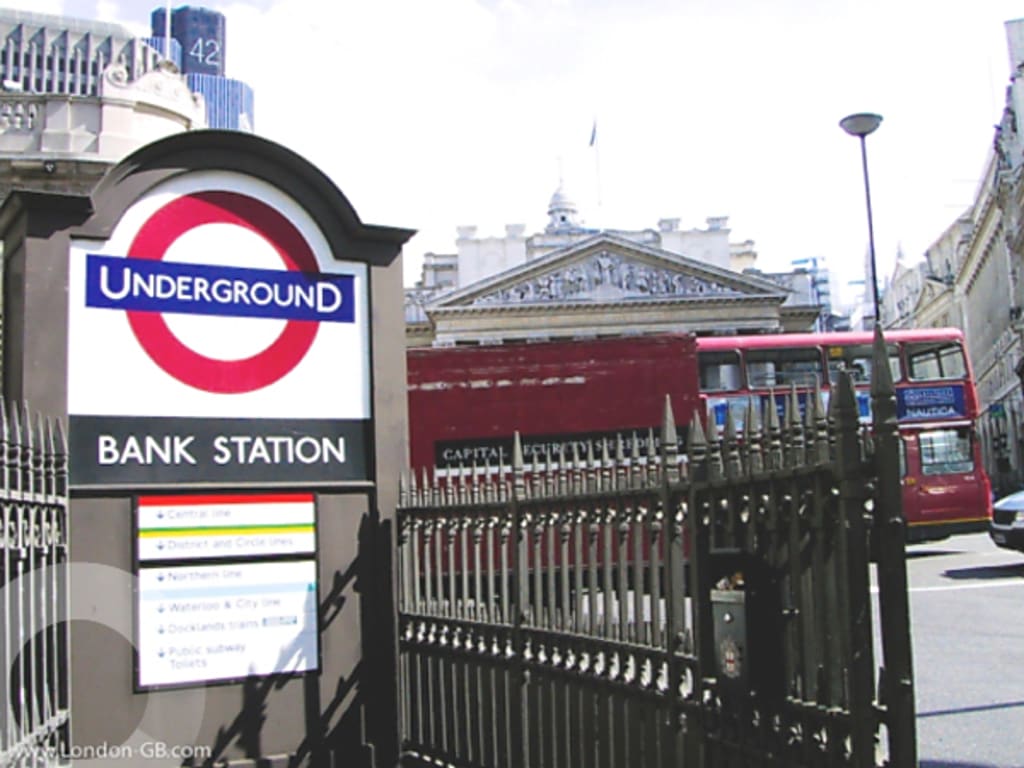The History of Bank Station
The History of One of London's Busiest Stations

Bank Station is one of the busiest stations in London; it saw over 64 million journeys pass through it in 2016, ranking it the 8th busiest station in London just 3 million journeys behind Stratford station. The station is currently directly linked to Monument Station. The station was built at Bank Junction and currently is the length of King William Street. The station currently has three London Underground lines running through it. These are the Central, Northern and Waterloo and City lines.
In 1898, the Waterloo & City Railway was built by the London and South Western Railway company with the sole aim to link Waterloo and the City of London, directly. So, they built platforms below Queen Victoria Street and some close to Mansion House before proceeding to open a station on 8th August 1898 called “City.”
The first station to be called Bank was opened in early 1900. This was when the City & South London Railway expanded. It continued from Borough through to Moorgate. Later that year the Central London Railways opened a new eastern terminus of their line. This was made very close to the other companies’ stations and therefore soon after their ticket halls were connected. In the 1920s, escalators were put into the station to connect between both companies’ platforms for a smoother connection between trains.
In 1933, the station was interlinked with the nearby Monument Station when a new connecting escalator was opened for easier interlinks between both stations. On the current tube map, they are interlinked together, however, have both station names written on the map.
In 1941, 111 people were killed at Bank station when a German bomb hit the booking hall as well as reaching the platforms creating a crater. The station didn’t open for two months after the incident.
On September 27, 1960, Bank station installed a travellator and this was the first ever to be used in Europe. Before this was installed, the only exit was a sloping corridor, and therefore something needed to be done. The original plan was to put lifts in, however, this was scrapped due to the cost. After numerous problems, it was finally finished in 1960, and previous to this the station was very unpopular due to the sloping corridor. However, the moving walkways improved the station massively at the time.
In 1991, the Docklands Light Railway (DLR) built an extension deeper than the Northern Line; it opened on July 29 that year. The DLR platforms were connected at both ends one was to the Central Line platforms and the other was to Monument Station. They also linked the Central Line to the Waterloo and City Line; when doing this they uncovered part one of the tunnelling shields that were used to create the line and the shield is still there today where millions of commuters walk past not knowing what’s above them. The man who created the tunnelling shield, James Henry Greathead, also has a statue outside the station which was unveiled in 1994 by the Mayor of London.
In 2016, Bank & Monument Station was named the 8th busiest tube station on the London Underground network behind stations such as Waterloo, Victoria, Kings Cross and Liverpool Street. It was busier than stations such as Euston, Paddington, Canary Wharf, and Bond Street. Over 64 million people passed through the station which was up around 7 million more than the previous year.
In 2021 a new entrance will be built to Bank, very close to Cannon Street station, and this will boost the capacity by around 40%. The works include 12 new escalators and 3 new lifts and work began on the new entrance in 2016.
About the Creator
Interesting Stories
Football.






Comments
There are no comments for this story
Be the first to respond and start the conversation.